Lat pulldown is a basic exercise that involves the back, and it strengthens the upper body by making it stronger, broader, and more pronounced. The back, posture and pulling power can be built by means of limited motion and proper shape. The lat pulldown is non-hazardous, can be adjusted and is suitable for both beginner and advanced lifters. How to make it right, how to maintain weight, and how to make it a part of your workout are some of the questions that will help you get maximum results without being injured in the process.
- What Is a Lat Pulldown?
- Muscles Worked in the Lat Pulldown
- The Lat Pulldown: How To Do It Right
- Common Mistakes to Avoid
- Benefits of Lat Pulldown
- Lat Pulldown Variations
- What Should the Lat Pulldown Weight be?
- What is the Number of Sets and Reps of Lat Pulldown?
- Comparison: Lat Pulldown and Rows, and Pull-Ups
- Breathing, Performance, and Safety Hints
- Conclusion
- Frequently Asked Questions
What Is a Lat Pulldown?
The lat pulldown is an exercise that involves strength training on a machine and is mainly aimed at training the latissimus dorsi muscles, the big V muscles that are formed on the sides of your back. It has the same movement pattern as a pull-up, but you can control the level of resistance, and therefore, it is easier to concentrate on form and muscle contraction.
It is done by the means of pulling a weighted bar over your head to your upper chest, keeping yourself straight. The lat pulldown machine is common in most gyms as it builds pulling strength, shoulder stability, as well as general balance of the upper body.
This is an exercise that primarily works on your back rather than on your chest. Though a few chest and shoulder muscles are involved, the main body muscles that are strengthened are your back muscles, especially the lats. It also works to improve posture over time and provides your upper body with that sculpted and athletic appearance of the v-tapered.
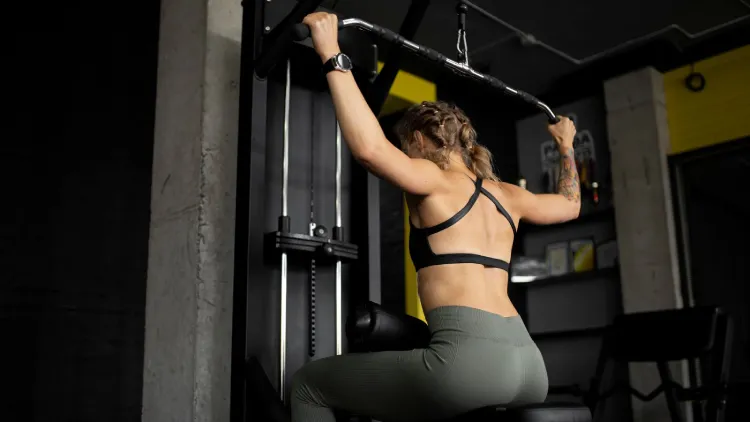
Muscles Worked in the Lat Pulldown
Lat pulldown causes several kinds of muscles to be activated, which collaborate to be strong and stable. The main muscle is the latissimus dorsi, which is the muscle which extends, adducts and rotates the shoulder joint. Supporting muscles include:
- Biceps brachii: Assists in lowering the bar and provides stabilisation to the arms.
- Rhomboids and trapezius: Pull the muscles of the shoulder in.
- Rear deltoids: Help to control the movement of the bar.
- Teres major: This plays in coordination with the lats to make the pulling easy.
- Core muscles: Do not lean backwards too far.
Since it is a compound movement, the lat pulldown uses several sets of muscles, enhancing aesthetics and strength. This improves your performance on the pull in the long run, extending to pull-ups, rows and even deadlifts.
The Lat Pulldown: How To Do It Right
Proper technique is necessary to maximise the use of the lat pulldown and prevent injuries. Here’s how to do it properly:
- Adjust the seat and pad: Make sure the pad around your thighs fits tightly on your thighs so that your body does not move around.
- Bar grip: Pronated (overhand) grip- slightly farther than shoulder-wide.
- Start position: Sit tall, and your chest raised, your shoulders resting, and your arms extended to your full length and are extended.
- Pull down: Breathe out, and slide the bar downwards to your upper chest, and aim to squeeze the shoulder blades into each other.
- Stop: Rest here one second at the bottom of the movement.
- Return: Breathing slowly, squeeze gradually, and control the bar all the way back to straighten your arms.
Do not jerk or pull behind your neck; always keep the bar in front of your chest, that way it is safe and you will get the maximum out of your muscles. It is very important to breathe properly; the exhale should be exhaled as you pull the breath in, and the release should be an inhale.
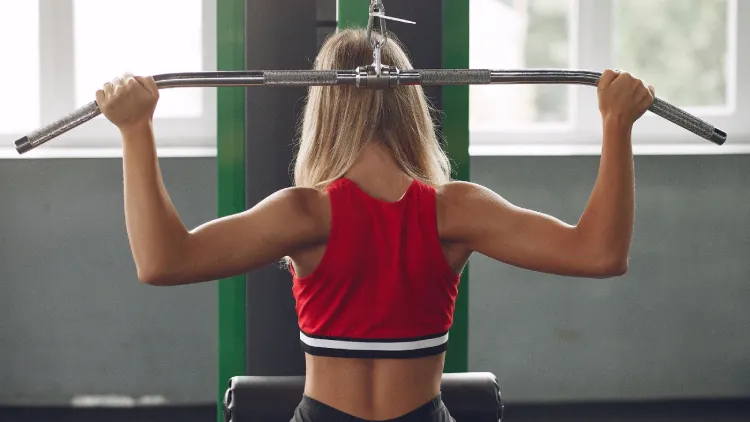
Common Mistakes to Avoid
The slightest of errors can be encountered during a lat pulldown and minimise its efficiency or strain it. Common errors include:
- Excessive weight: When you are not able to pull it down smoothly, the weight is excessive. Begin with less weight; a good starting point is 20 kg, and build up.
- Bending backwards: This takes the emphasis on your lower back and biceps as opposed to your lats. It only takes a lean of 10-15 degrees.
- Drawing behind the neck: This may cause a strain on your shoulders and your neck. Always pull in front of your chest.
- Accelerating the movement: This is done by a 3-second negative (eccentric) phase that produces more time under tension and develops more muscle.
- Making a half-range: Don’t short-change the movement; bring the arms all the way up to the top.
It should be remembered that good form always beats heavy lifting. It is more appropriate to have 3×10 perfect reps than bad ones.
Benefits of Lat Pulldown
The lat pulldown has numerous advantages to both the novice and the pro lifter:
- Develops a bigger and broader back: The habit of doing lat pulldowns now and then makes you much more V-tapered and symmetrical in your upper body.
- Enhances posture: Makes the muscles which pull your shoulders back stronger, which will help in fighting against slouching.
- Strengthens the pull-up: Lat pulldowns replicate the same movement, and they are very good for training in bodyweight pulling.
- Maintains shoulder well-being: Trains the supporting muscles that safeguard your joints.
- Burns fat and muscles: The intensity of the workout determines the calorie expenditure, but on average, a 70 kg body weight person, in 5 minutes of lat pulldown exercises, burns approximately 100-120 calories.
With time, it makes you stronger, more coordinated and uses more calories doing lat pulldowns.
Lat Pulldown Variations
Some of the effective variants of the lat pulldown to reach the various angles and muscle fibres are:
- Reverse-Grip Lat Pulldown: An underhand grip is utilised to work the biceps more.
- Close-Grip Lat Pulldown: Aims at the inner lats and the middle back.
- Single-Arm Lat Pulldown: Assists in the correction of muscle imbalances.
- Neutral-Grip Lat Pulldown: It will cause less strain on the shoulders but will engage the lats effectively.
Using these variations in your workouts will ensure your muscles are kept at it and that there are no plateaus.
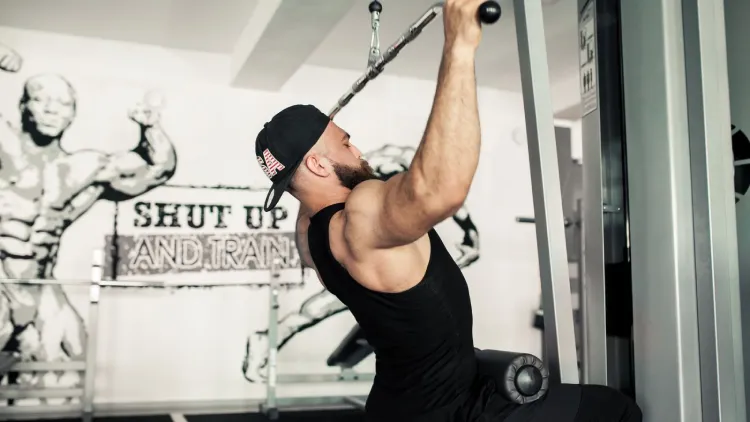
What Should the Lat Pulldown Weight be?
The correct weight of a lat pulldown will be determined by experience and objectives. When starting to learn form, it is always good to start with 20 kg. The goal of intermediate lifters is between 40-60 kg, and the higher goal of advanced athletes is 80-100 kg.
Also, you should remember that you are aiming at controlled movement and not heavy lifting. Gyms The 3/2/1 principle (three sets of medium intensity and two sets of heavier weight and one set of approaching failure) aids in balancing strength and endurance. Likewise, two seconds to pull, two to hold, and two to release (2-2-2 rule) is used to keep the muscles active.
On a lat pulldown, the average man is generally able to pull approximately 6080 kg, with elite lifters being able to pull much more, over 100 kg. When it comes to 101 pounds, the figure is about 45.8 kg.
What is the Number of Sets and Reps of Lat Pulldown?
To build muscles (hypertrophy), do 3-4 sets of 8-12 reps. When you are training to be stronger, reduce the reps to 58 and increase the resistance. On endurance, target the 12-15 reps using light weight.
The correct form and intensity of ten reps is enough for most people to do three sets of ten. You need to add lat pulldowns at least 2-3 times a week; however, there is no need to do it daily. Rest is necessary to enable muscles to grow.
When you are planning the pull day workout, you should add lat pulldowns, rows, hammer curls, and rear delt flyes to reach full engagement of the back.
Comparison: Lat Pulldown and Rows, and Pull-Ups
Row and lat pulldown will make your back stronger, yet they will work different muscle groups. The rows are aimed at the middle back and rhomboids, whereas the lat pull-downs are directed at the lats and upper back. Ideally, these should be incorporated into your back routine to have it rounded off.
In comparison to lat pulldowns and pull-ups, pull-ups rely on your weight and need more strength in general, whereas pulldowns allow changing the resistance and emphasise the technique. To the majority of individuals, lat pulldowns are safer and less difficult to advance.
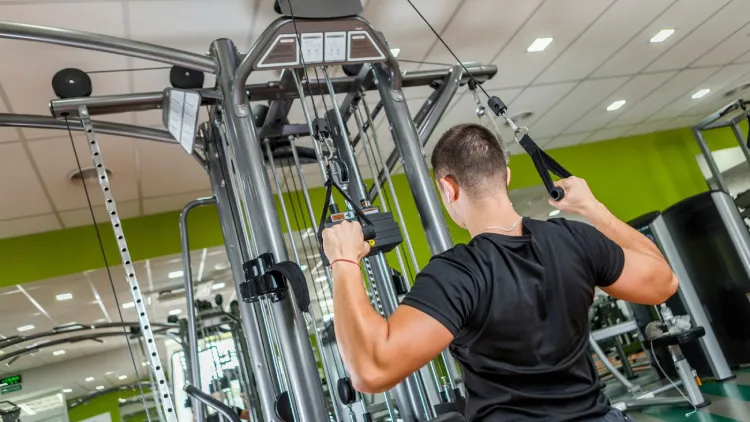
Breathing, Performance, and Safety Hints
Lat pulls are usually safe as long as it is performed in the right form and at a moderate weight. Warm up before lifting; never do it in a jerky or quick motion. Pull down and inhale during each of the reps.
The bells-and-whistles training can also be included: such training as a 3-second negative or 5-3-1 training regime can be added to get some time under tension and strength. Faster results will be achieved when you stick to a healthy routine and diet (such as the 90/10 diet, where 90 per cent of your food is clean, and 10 per cent indulgent).
Lat pulldowns help to increase strength and stability. They can make your waist appear a little slimmer through the expansion of your shoulders and lats, which makes it appear tapered.
Although the exercise per se does burn a moderate level of calories, approximately 200250 calories in 30 minutes based on intensity, it is not necessary to burn 1000 calories by itself. Accompany it with the compound lifts or cardio to burn more calories.
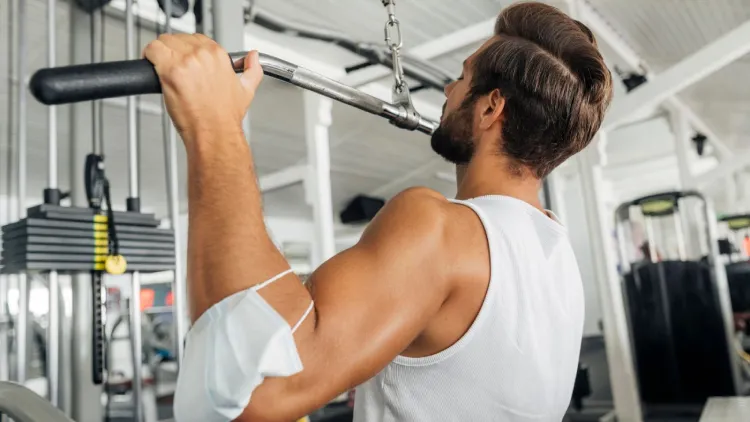
Conclusion
Lat pulldown is also one of the best exercises that can give a strong and appealing back. It trains the lats, builds a better posture and general pulling. You will develop size and strength healthily and safely by simply watching good form, mastering motion, and gradually adding weight.
No matter the reason you work out, be it to gain beauty, to develop athletic ability or to become stronger, broader and more pronounced in your back, adding the lat pulldown to your workouts along with some supporting exercises such as rows and pull-ups will allow you to gain a stronger, broader and more defined back.
Frequently Asked Questions
1. Is the lat pull-down superior to the pull-ups?
The lat pulldown is simpler to use as it gives variable resistance and a higher form of control. Pull-ups train crude strength and stamina; thus, a combination of the two exercises provides optimal back conditioning.
2. What is the number of sets and reps of lat pulldown?
To maximise the requirement, do 3-4 waves of 8-12 reps, doing the activity slowly and in a controlled fashion. Light beginners ought to begin with light to control the right form, then gradually add the load.
3. Should I bend forward in case of the lat pulldown?
Proper posture should be in an upright position with a slight 10 -15 degree tilt backwards. Bending backwards too much will decrease lat engagement and focus on your lower back.
4. Shoulders are safe with lat pulldowns?
Yes, lat pulldowns are healthy, provided that they are done correctly and with moderate weight. To prevent strain on the shoulders or injury to the neck, always draw the bar out in front of the chest.

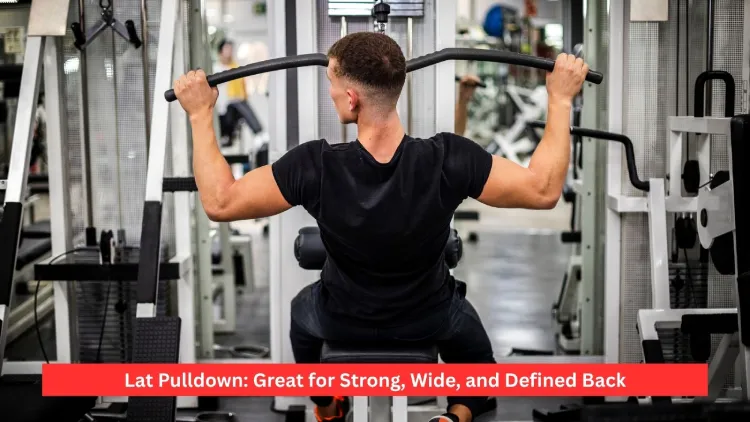






2 thoughts on “Lat Pulldown: Great for Strong, Wide, and Defined Back”
I believe this web site has got very fantastic written content blog posts.
Thank you! I really appreciate your kind words and support.